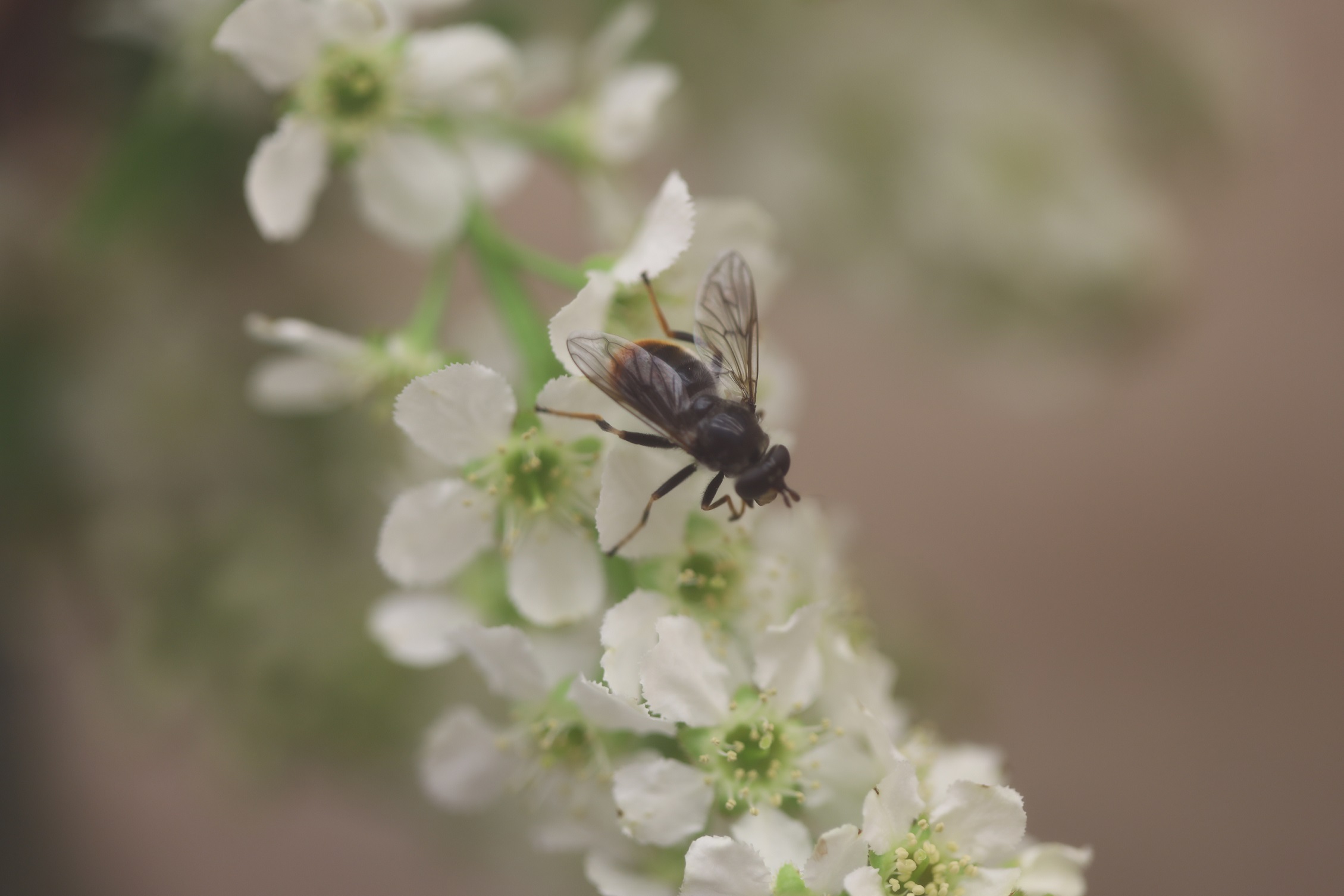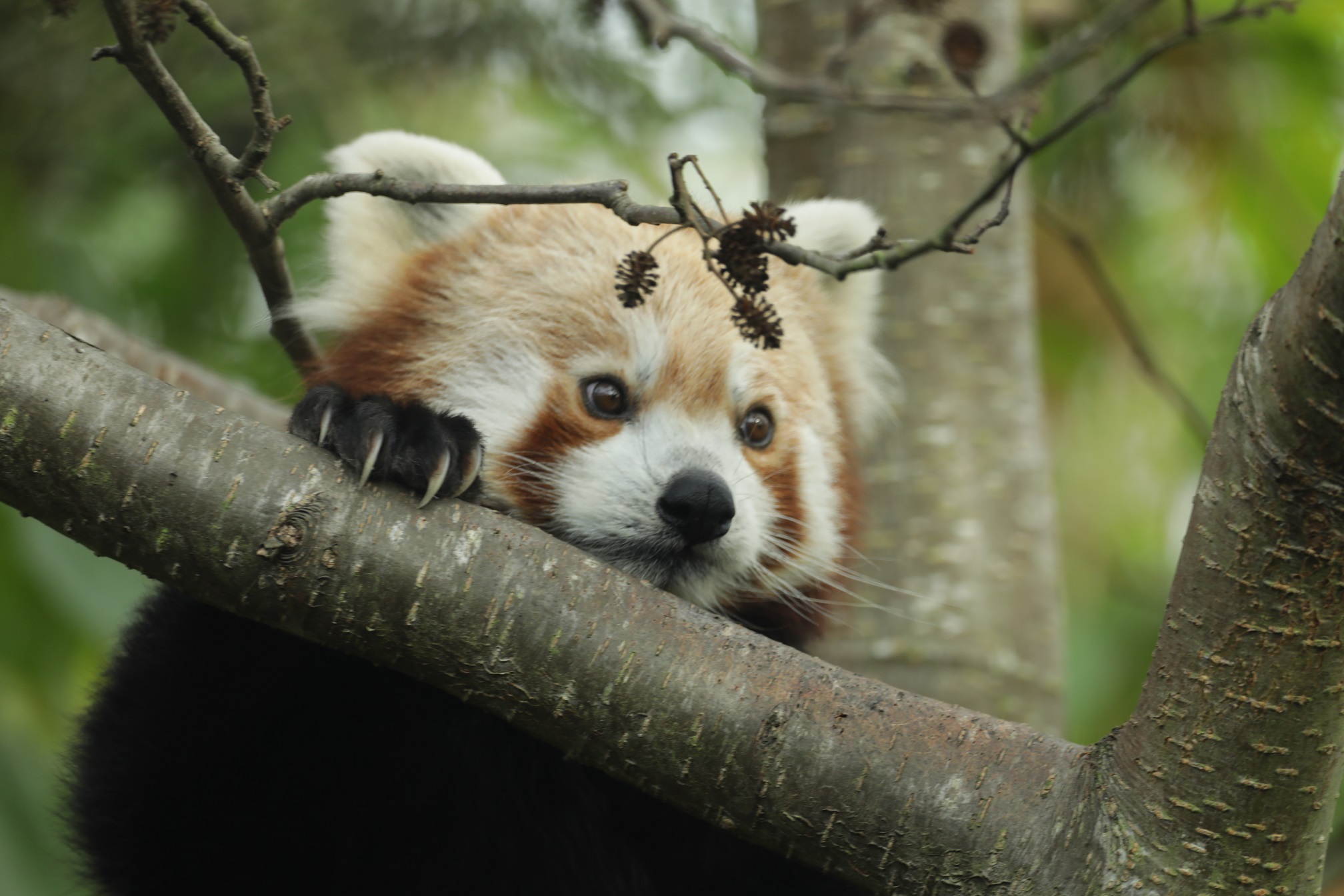RZSS takes a huge step forward in saving pine hoverflies from extinction in Britain
Posted 16 Feb 2022

Around the world, many invertebrate species are suffering major population crashes. Despite making up around 77% of species known to science and fulfilling vital roles in ecosystems and food production, these tiny species are frequently overlooked by conservation programmes.
Here at the Royal Zoological Society of Scotland (RZSS) we’re using the expertise at both our zoos, Highland Wildlife Park and Edinburgh Zoo, to pull the critically endangered pine hoverfly back from the brink of extinction.
In Britain, pine hoverflies are restricted to one forest, right here in the Cairngorms National Park. No one has seen an adult pine hoverfly in the wild for over eight years! Habitat loss is the main threat facing the species and the complex, old-growth pine forests they rely on have all but disappeared.
To help, we started a pine hoverfly breeding programme Highland Wildlife Park in 2018 and, excitingly, in 2019 we took the species through its first successful breeding season at the park.
Preparing for the different life stages of this species in captivity is far from straightforward. To replicate the pine tree rot holes the larvae would normally develop in, larvae are kept in jam jars filled with pine sawdust and rainwater. Pupae are transferred to hummus pots filled with moss and when adults emerge, they are moved into special flight cages full of their favourite food plants.
Adults live for four to six weeks, so our team has a very small window to facilitate mating and egg laying for the following season.
After producing 16 larvae in 2019 and 170 larvae in 2020, we realised our small project space would not be enough. Thanks to support from the National Geographic Society, Marvelous Europe Ltd, the Cairngorms National Park Authority, Forestry and Land Scotland, NatureScot, and Scottish Government, a larger, more modern breeding facility for our rapidly growing pine hoverfly population was constructed. In 2021 we welcomed over 8,000 pine hoverfly larvae at the park!
Our aim was to produce enough larvae to establish new populations within the Cairngorms and with our biggest breeding season yet this became a possibility. While our charity has been working to breed this tiny species, the Rare Invertebrates in the Cairngorms (RIC) project, led by the RSPB and Cairngorms National Park Authority, has been working with Forestry and Land Scotland to create artificial habitat for pine hoverflies to lay their eggs. In October 2021 we worked with RIC to release 3,000 larvae into three specially selected sites owned by the RSPB and FLS. This leaves 5,000 or so larvae in the breeding facility, with a second larval release planned for March and a release of adults in late spring. We’ll be keeping the breeding population at the park going as a safety net too.
There is plenty more to do, but the pine hoverfly project is one step closer to preventing this tiny pollinator from disappearing from Britain. By looking after the little guys, we hope to help whole ecosystem restoration and give species big and small a safe, functional space to thrive in the wild.

